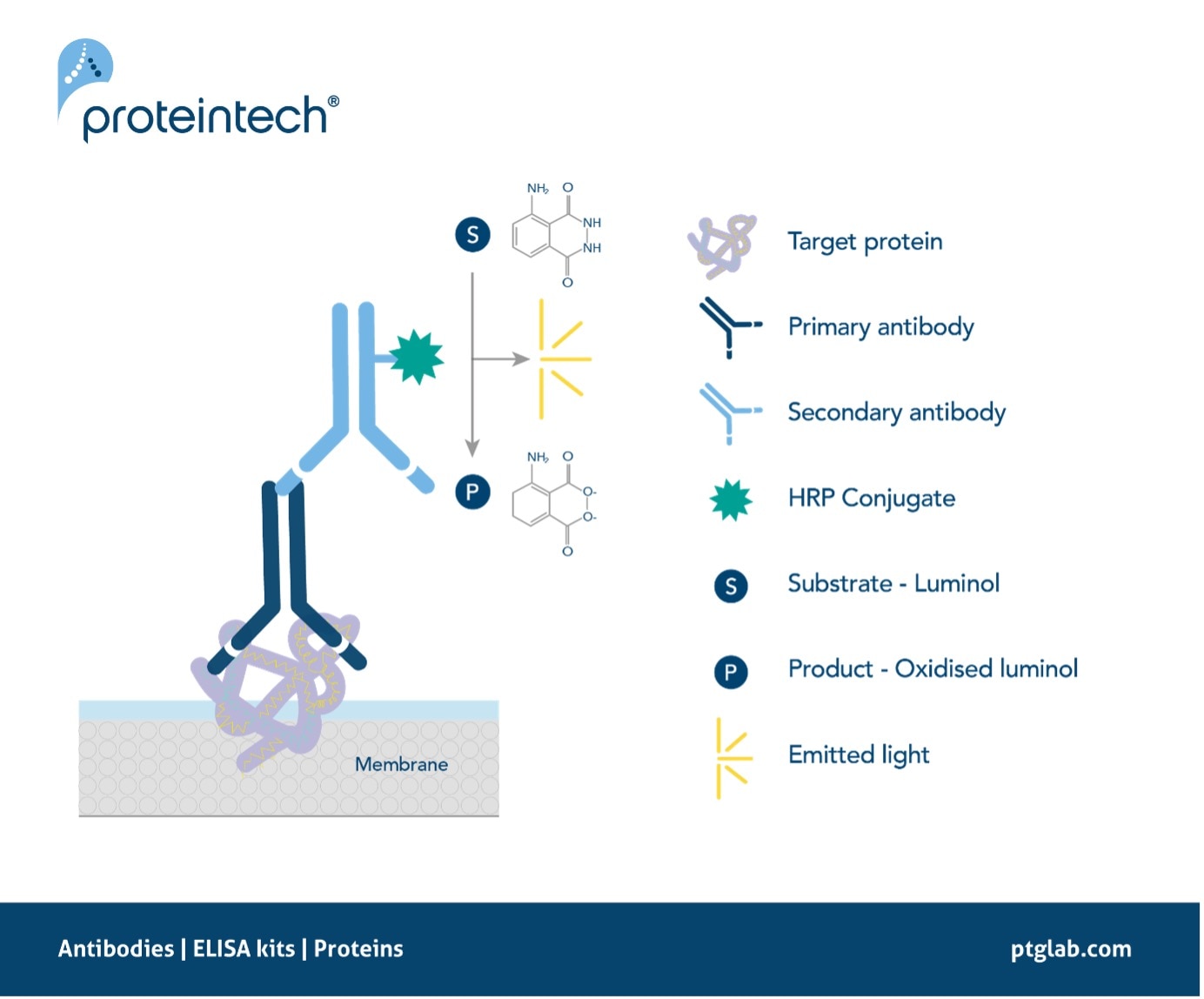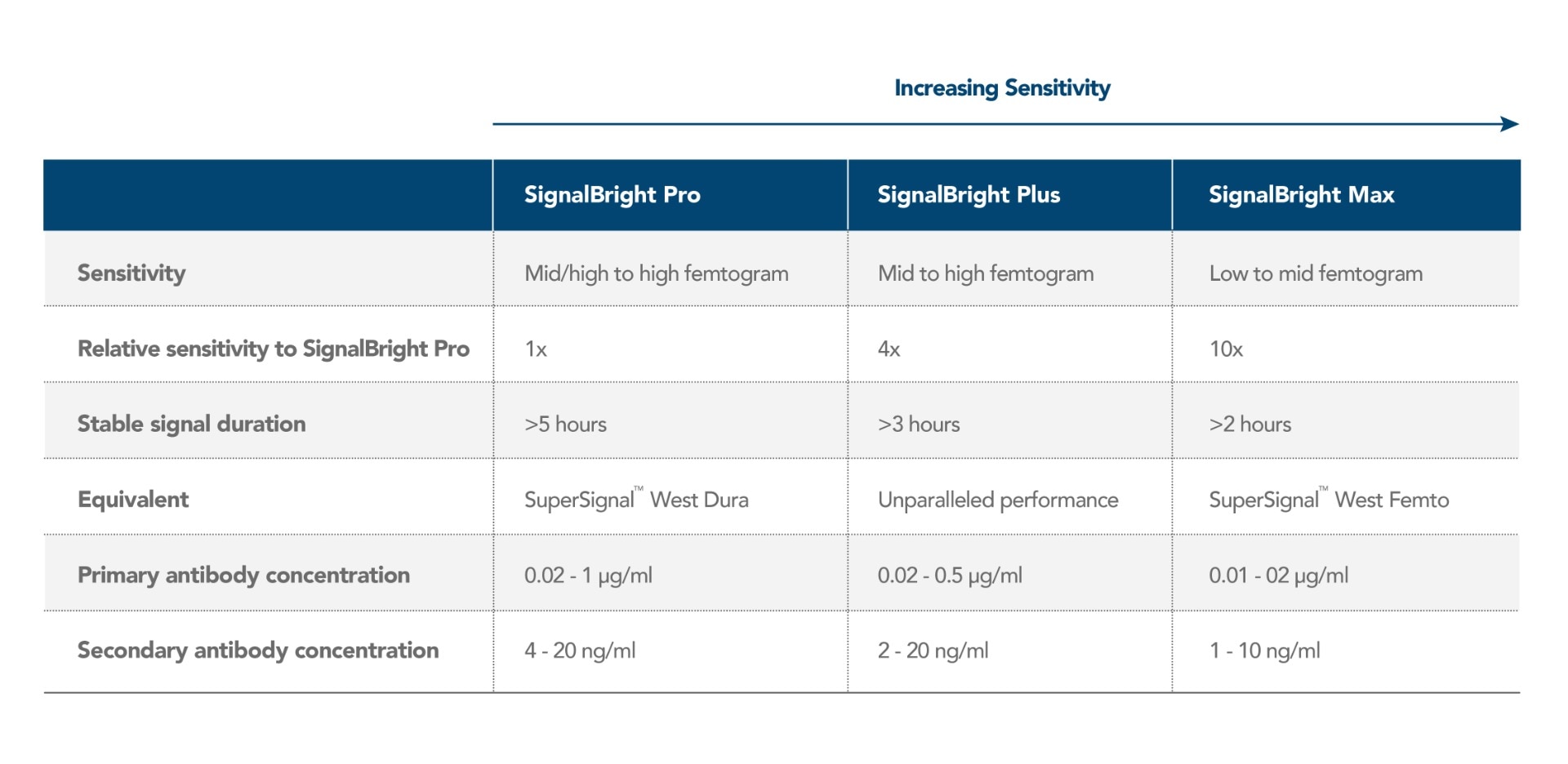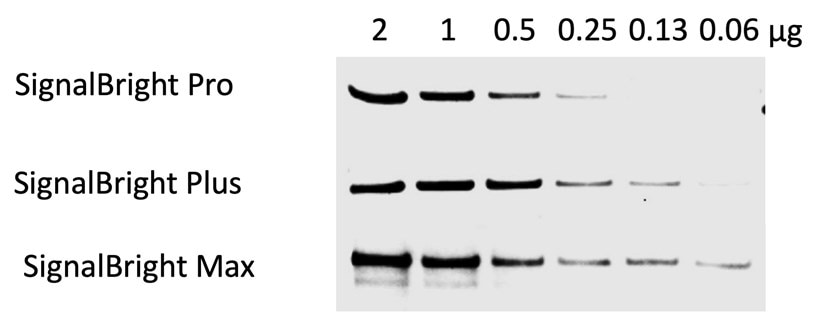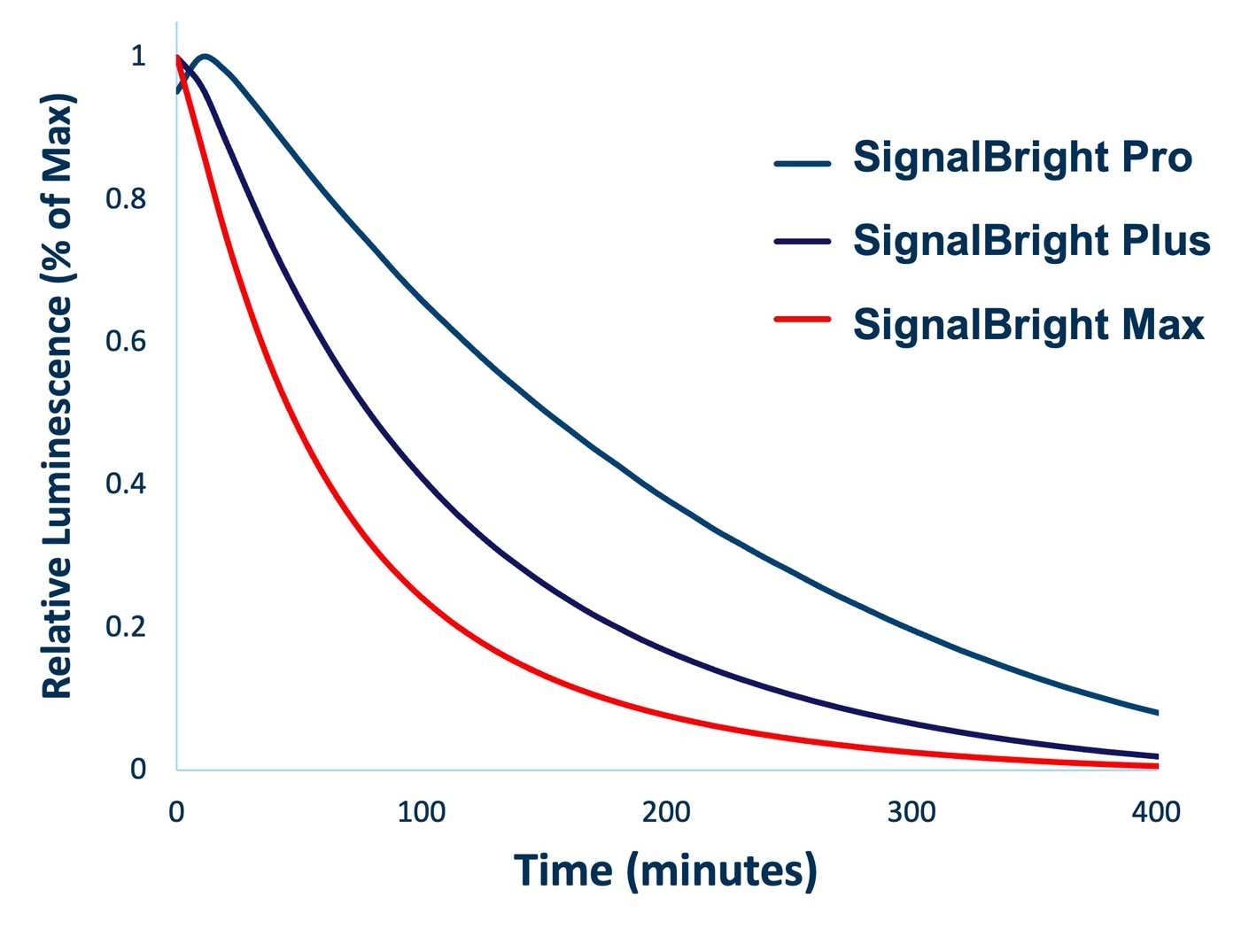SignalBright Chemiluminescent Substrate
Proteintech is excited to launch our new range of highly sensitive chemiluminescent substrates. Our SignalBright Chemiluminescent Substrate range of SignalBright Pro, SignalBright Plus, and SignalBright Max is perfect for the detection of femtogram levels of protein. See the table of comparisons below to select which substrate is right for you.
View all SignalBright Chemiluminescent SubstratesIntroduction
To detect antibody binding to a protein of interest during a western blot (WB) experiment, a signal generation system is required. The most common method of signal generation for WB is a primary or secondary antibody conjugated to the enzyme horseradish peroxidase (HRP), which emits light in the presence of a luminol and a peroxide buffer (Figure 1). This enzyme-substrate combination only produces light during the reaction, after which signal output diminishes.

Figure 1: Signal generation in chemiluminescent western blotting. A secondary antibody with an HRP conjugate enables the detection of a target protein by oxidizing its substrate luminol with the emission of light as a by-product.
Comparisons for Proteintech’s SignalBright substrates?

Proteintech’s SignalBright Pro (PK10011), SignalBright Plus (PK10012), and SignalBright Max (PK10013) Enhanced Chemiluminescent Substrate have different levels of sensitivity and signal duration (see above table). In particular, our SignalBright has unparalleled performance to competitor products with highly sensitive detection, minimal optimization required, and long, stable signal duration.

Figure 2: Comparison of Proteintech’s SignalBright Pro (PK10011), SignalBright Plus (PK10012), and SignalBright Max (PK10013) Enhanced Chemiluminescent Substrate.. Serial dilutions of HeLa cell lysate. Primary antibody: Proteintech Beta Catenin 51067-2-AP, 1:20,000. Secondary: Quanta BioDesign HRP-Goat anti-Rabbit IgG (H&L) (11-0201-0503) at a 1:100,000 dilution. Exposure Time: 30 seconds.
Detection of low abundance proteins or precious samples
One benefit of the WB technique is the ability to detect and quantify low abundant proteins in a sample. Additionally, WB can be used to conserve precious samples such as human patient tissue.
As such, certain adaptations need to be made to the WB workflow in order to consistently and accurately detect low abundant proteins. One solution is to use a highly sensitive substrate, like Proteintech’s SignalBright Chemiluminescent Substrate range.
Importance of antibody validation and concentration
When using extremely sensitive chemiluminescent substrates such as SignalBright Plus (PK10012), it is highly important to ensure that the primary antibody you use is well validated for the target, ensuring specificity. Proteintech antibodies all undergo industry-leading validation practices, as well as high-level manufacturing practices ensuring that they are highly specific with a strong affinity for their target protein. This ensures that the antibody is only detecting the desired protein, preventing non-specific binding of off-target proteins.
Primary and secondary antibody concentration is also highly important when detecting low abundant proteins with sensitive chemiluminescent substrates such as SignalBright Plus (PK10012). It might seem counterintuitive, but increasing the antibody concentration in order to detect a low abundant protein does not increase sensitivity. In fact, this will have the opposite effect when using a highly sensitive substrate, resulting in rapid saturation of the signal causing high background, making it difficult to effectively detect the target. Make sure to use the recommended concentrations of primary and secondary antibody as a starting point when optimizing your experiment with SignalBright substrates to avoid oversaturating the blot.
Signal intensity and duration
One important factor to consider is signal intensity and duration. This can vary widely depending on the specific substrate used and the amount of enzyme conjugate applied to the system. Adding too much HRP can cause the signal to decay too quickly as well as cause problems with signal variability, high background, and decreased sensitivity. Therefore, a long duration signal emission curve achieved through a high-quality substrate and optimized HRP-conjugate concentration will create the optimal conditions for reproducible results.
Proteintech’s SignalBright Enhanced Chemiluminescent Substrate range produces a bright, stable signal for over 5 hours. This long, stable signal provided by SignalBright substrates means that imaging does not need to occur straight after signal development. This will give you peace of mind, allowing time to access an imager and take repeat images as needed within a wide time frame.
Using a higher sensitivity substrate like SignalBright Plus (PK10012) increases the chance of generating adequate signals by providing ultra-sensitive detection and greater signal-to-noise ratios, thus allowing the visualization of proteins in small sample volumes or with low abundant targets.

Figure 3: Luminescence (Relative light units) of 50pg HRP reacting in SignalBright Pro (PK10011), SignalBright Plus (PK10012), and SignalBright Max (PK10013) over the course of 400 minutes. Signal output normalized to maximum signal for each substrate.
Imaging systems
Western blot chemiluminescent detection is performed by an X-ray film imager or a charge-coupled device (CCD) camera. X-ray film is the traditional method of imaging and provides excellent sensitivity.
However, one drawback of this technique is that each film can only be used once, and the exposure time can only be assessed as appropriate after the film is developed. Recently, CCD cameras have become more common as a method of detection due to their ease of exposure time optimization and high dynamic range of detection.

